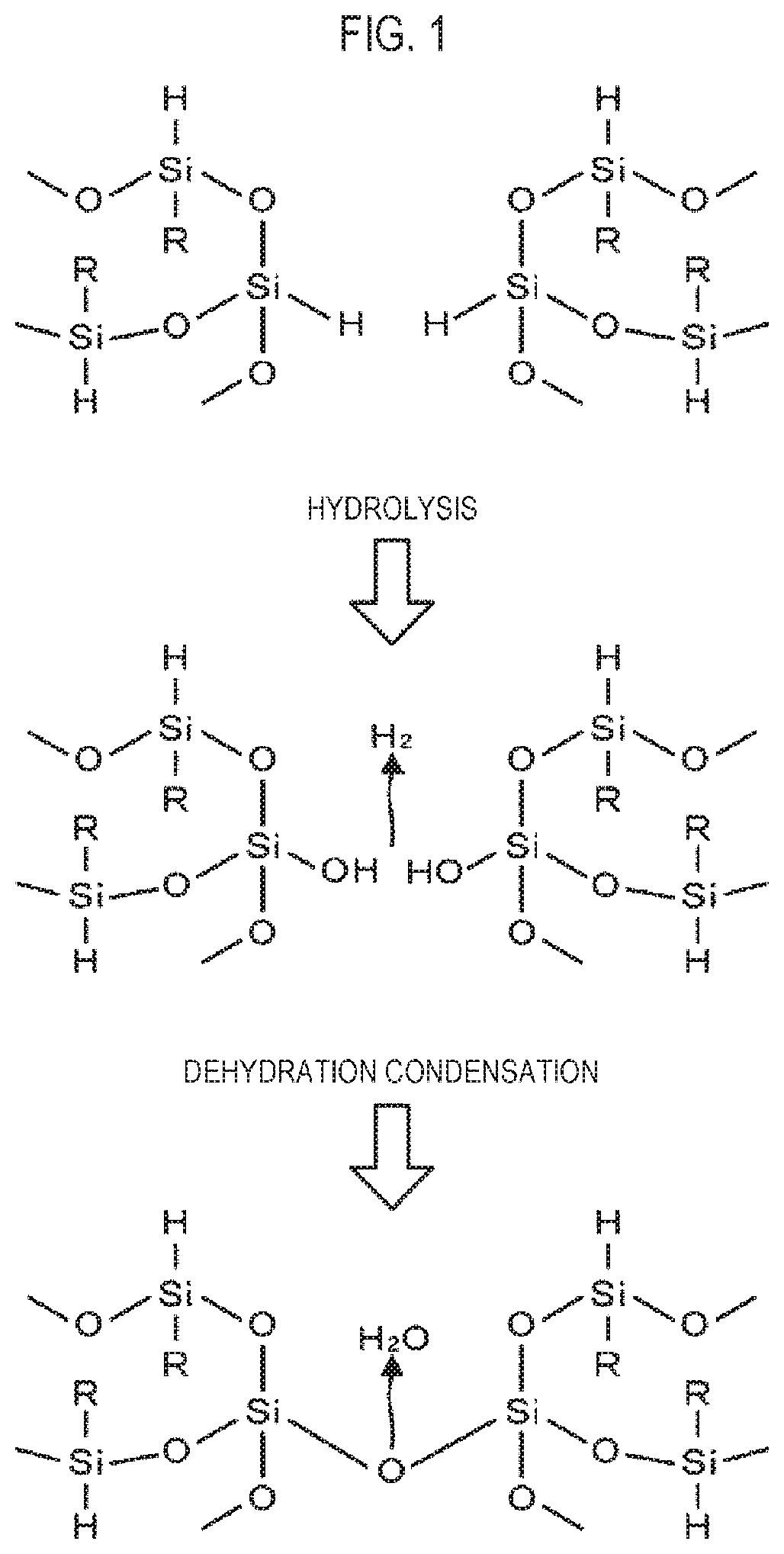Method for forming insulating film, apparatus for processing substrate, and system for processing substrate
a technology of insulating film and substrate, applied in the direction of liquid surface applicators, liquid/solution decomposition chemical coatings, coatings, etc., can solve the problems of difficult hydrolysis promotion, low throughput, and method is difficult to be used in a production line, so as to reduce the amount of remaining without hydrolysis, increase the production efficiency of hydroxyl groups, and reduce the effect of energy for hydrolysis
- Summary
- Abstract
- Description
- Claims
- Application Information
AI Technical Summary
Benefits of technology
Problems solved by technology
Method used
Image
Examples
first embodiment
[0050]Next, an embodiment of a method of forming an insulating film of the present disclosure is described in detail. As a method of forming an insulating film using the system for processing a substrate, a process of performing STI on a target substrate is described. As shown in FIG. 3, grooves 110 (trenches) are formed in a silicon film 100 of a wafer W that is a target substrate. A coating liquid obtained, for example, by dissolving a precursor of SOG film in an organic solution is applied to the wafer W, whereby a coated film 101 is formed to fill the trenches 110. For example, polysilazane that is a polymer having —(SiH2)NH— as a fundamental structure is used as the precursor. In the coating liquid, for example, molecular groups of polysilazane are dissolved in an oligomer state to improve fluidity. Accordingly, as shown in FIG. 3, when a coating liquid is applied to the wafer W, for example, by spin coating, the coating liquid easily enters the narrow trenches 110, so that the...
second embodiment
[0095]Next, a method of forming an insulating film according to a second embodiment of the present disclosure is described. In this embodiment, after the process of radiating the ultraviolet rays to the coated film 101 shown in FIG. 5, the ultraviolet rays are further radiated to the coated film. For example, the ultraviolet rays of a dosage of 2000 mJ / cm2 are radiated when the ultraviolet rays are primarily radiated to the coated film, and then the ultraviolet rays of a dosage of 1000 mJ / cm2 are radiated as a process of secondarily radiating the ultraviolet rays to the coated film.
[0096]The amount of energy that is supplied to the coated film and activity of the coated film are described. As shown in the schematic diagram of FIG. 18, when energy is radiated to a coated film, energy exceeding a predetermined tolerance E1 is given to form dangling bonds. However, when energy exceeding a tolerance E2 is further given, activity of the coated film excessively increases, whereby the acti...
example 1
[0121]An example defined as Example 1 was conducted by radiating ultraviolet rays having a main wavelength of 172 nm in a N2 gas atmosphere in the process of radiating the ultraviolet rays in the method of forming an insulating film such that the dosage becomes 2000 mJ / cm2. In Example 1, the coating liquid described in the embodiment was applied to the wafer W, the wafer W is heated at 150 degrees C. for 3 minutes in the solution volatilization process, and then the process of radiating the ultraviolet rays was performed without performing the reflow process. Next, the wafer W was transferred to a heat treatment apparatus without being left for a period. Subsequently, in the curing process, the wafer W was heated through two stages performed at 400 degrees C. for 30 minutes and at 450 degrees C. for 120 minutes with water vapor supplied in a heat treatment furnace, and then the wafer W was heated at 450 degrees C. in a N2 gas atmosphere. The target thickness of a coated film was 100...
PUM
| Property | Measurement | Unit |
|---|---|---|
| wavelength | aaaaa | aaaaa |
| wavelength | aaaaa | aaaaa |
| wavelength | aaaaa | aaaaa |
Abstract
Description
Claims
Application Information
 Login to View More
Login to View More - R&D
- Intellectual Property
- Life Sciences
- Materials
- Tech Scout
- Unparalleled Data Quality
- Higher Quality Content
- 60% Fewer Hallucinations
Browse by: Latest US Patents, China's latest patents, Technical Efficacy Thesaurus, Application Domain, Technology Topic, Popular Technical Reports.
© 2025 PatSnap. All rights reserved.Legal|Privacy policy|Modern Slavery Act Transparency Statement|Sitemap|About US| Contact US: help@patsnap.com



